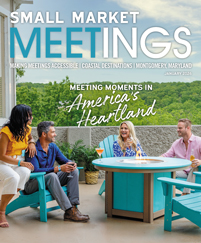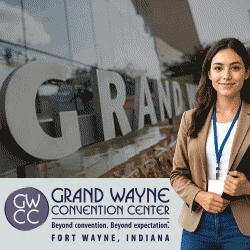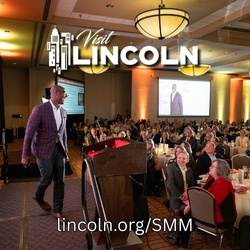The opposite of a sight unseen is a site inspection.
There’s little room for leaps of faith in meeting planning, which is why every planner knows site inspections are critical when selecting a venue. They help planners find diamonds in the rough and save themselves from poor investments. They help things run smoothly later on and give planners a head start with designing meetings. But with so many things to look for, how can planners ensure they’re making the most of these brief visits? And in a world where time is at a premium more than ever, how can planners compromise if they can’t be everywhere at once?
Here’s what three industry experts have to say about maximizing site inspections.
A Collaborative Effort
Site inspections entail more than just a planner showing up with questions.
“It’s a collaborative team effort to make sure the customer is happy with the venue and on budget,” said Stephanie Mays Boyd, director of sales and marketing at the Pennsylvania Convention Center.
On the planner’s end, one the best practices is agreeing to site inspections only when it’s appropriate. To save themselves and vendors time, Lynn Bjostad, owner and president of Premier Meeting and Event Management, recommends planners schedule site visits when they’re already most of the way through the RFP evaluation process. That way, they know the destination or venue is a serious contender for their event’s business, and the effort put into the preview trip isn’t undertaken in vain.
“[Venues] usually do quite a bit of prework before the site visit, so I would make sure it’s a valid location as I go through ®
“I definitely do my research on the hotel so I’m not wasting their time and I’m focused on what I need to know,” said Ann Luketic, a marketing specialist at Progressive Insurance who also plans events and incentives for the company’s agents.
Planners should also arrive prepared. To give everyone on the team a good idea of the expectations for an event, they should bring information, photos and specs about past events. A list of questions or a checklist is important, as is a basic floor plan. This ensures all parties have a heads-up on how the space will be used and the event’s general look and feel.
Venues can get just as much out of site inspections as planners.
“It’s a win-win, because we also have get to hear and understand the customer’s expectations and what they envision for their event,” Boyd said.
From the venue standpoint, best practices include making sure planners can tour all the meeting space they will require for the event. They shouldn’t be traveling hours only to find that the ballroom is booked and they can’t tour it.
Boyd added that venues should bring all relevant departments in for the site inspection. That includes representatives for catering, audiovisual and labor, or any others who will be involved in the event itself. That facilitates a robust conversation about the expectations for the event and keeps the entire team in the loop. That team should also include the local convention and visitors bureau or other destination marketing organization.
“We partner with the CVB, so we make sure on that site tour that there’s a rep from the CVB and hotel, so the client will have an opportunity to talk with them,” Boyd said.
The Devil’s in the Details
Site inspections are all about making sure a venue’s details align with the planner’s vision for the meeting. If they’ve done their due diligence, planners should be able to answer most of the big questions about the site prior to arriving. However, there are plenty of details that are easy to miss or overlook.
“The devil is in the details, even in the site visit,” Bjostad said. “It’s always best to find out before you move into contract.”
Some of the more commonly missed details include small behind-the-scenes things, like the number of electrical outlets, the size of the loading docks or the required permits. Logistics like restroom quantities and the flow of elevators and escalators also must be addressed, as they can impact the attendee experience.
Accessibility is another big item to look for. Just because a ballroom is accessible to disabled attendees doesn’t mean the hotel rooms will be and vice versa.
“I like to walk through the event from the eyes of the attendee,” Luketic said. “And also the exhibitors or even the planning team. I want to know what each of their experiences will be.”
A site inspection also is a chance to look for branding and marketing opportunities, such as places to display event signage.
Site inspections are about more than just the site of the meeting; they’re also a way for the planner to experience the area surrounding the venue. An important and often-missed detail during site inspections is what’s around the site. If the hotel is perfect, but it’s in a sketchy part of town where attendees will feel unsafe, that’s an important consideration.
“One of the things I love to do is meet the locals and learn the local flavor,” Luketic said. “Give yourself ample time to explore the city to get to know what the hotspots are; those are places you’ll want to direct your guests to when they have free time.”
That’s where having a CVB partner can really help. They can join planners on the site inspection, then arrange city tours and show the planners all the best local restaurants and attractions.
If They Can’t Be There
Meeting and event planners are among the busiest people in the workforce. Many planning companies are stretched for budget, staff and time. If they plan dozens of events each year, thorough site inspections may be difficult to organize and attend. So what happens if planners can’t attend a site inspection or they don’t have the time to inspect the surrounding area and meet vendors?
“So many of us are doing so much more with less staff that we’re sometimes limited to relying on each other for site checks, or having to do a virtual ones,” Luketic said.
Virtual site inspections, which had their moment when the pandemic halted travel and in-person meetings, are no longer the industry standard. However, these are still a viable option in some cases, such as when a planner is too busy to travel.
Technology has made 360-degree viewing of hotels and venues possible, including certain sleeping rooms. However, additional communication with the venue about the often-missed details, such as accessibility or parking, is also important. Recorded tours are available in some venues.
“Oftentimes there is a list of questions [planners] have prior to the site tour; we can certainly answer those by having a teams meeting so we can both do the recorded tour at the same time,” Boyd said.
Relying on testimonials from other planners and industry professionals is a great way to vet a place even if a planner can’t be there in-person. It’s also useful if they only have time to visit the venue and don’t get to experience the city firsthand. Other contacts can give a description of the local culture, recommend vendors and even report problems they experienced.
“If it’s an area I don’t have a vendor in, I would go to the CVB or sales person at the hotel and ask who they use,” Bjostad said.












